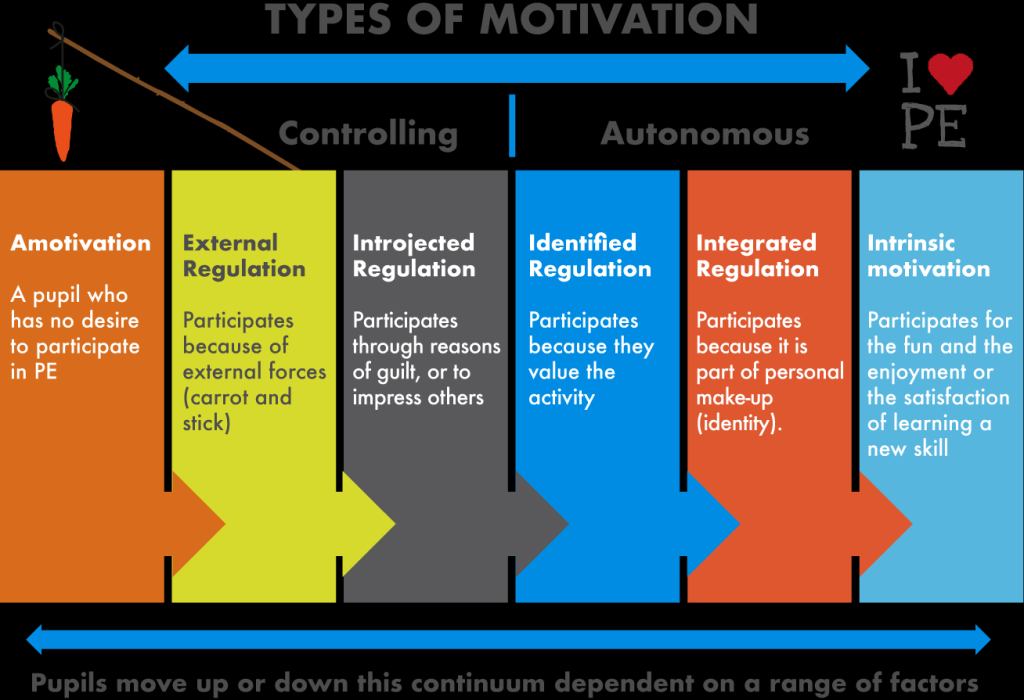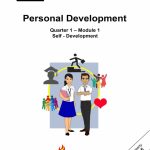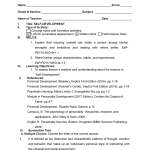Unlock Your Potential: Discover The Power Of The 5 Types Of Motivation!
5 Types of Motivation
Introduction
Hello Readers,
1 Picture Gallery: Unlock Your Potential: Discover The Power Of The 5 Types Of Motivation!

Welcome to this informative article about the 5 types of motivation. In our daily lives, motivation plays a crucial role in driving our actions and achieving our goals. Understanding the different types of motivation can help us better understand ourselves and others, and can also provide insight into how to effectively motivate ourselves and those around us. In this article, we will explore the five main types of motivation, their characteristics, and their impact on our lives.

Image Source: thepeproject.com
So, let’s dive in and explore the fascinating world of motivation!
Table of Contents
1. Intrinsic Motivation
2. Extrinsic Motivation
3. Achievement Motivation
4. Power Motivation
5. Affiliation Motivation
Intrinsic Motivation
Intrinsic motivation refers to the internal drive and desire to engage in an activity for its own sake, rather than for any external rewards or incentives. This type of motivation is fueled by personal enjoyment, satisfaction, and a sense of accomplishment. Individuals who are intrinsically motivated find joy in the process of achieving their goals and are often more persistent and creative in their pursuits.
Extrinsic Motivation
On the other hand, extrinsic motivation involves engaging in an activity or pursuing a goal for external rewards or consequences. This can include rewards such as money, recognition, or praise, as well as avoiding punishment or negative outcomes. Extrinsic motivation can be effective in certain situations, but it is often less sustainable and may lead to a decrease in intrinsic motivation over time.
Achievement Motivation
Achievement motivation is characterized by the desire to excel, accomplish challenging tasks, and surpass one’s own previous achievements. Individuals with high achievement motivation are often driven by a need for personal growth, mastery, and the pursuit of excellence. They set ambitious goals for themselves and are willing to put in the effort and dedication required to achieve them.
Power Motivation
Power motivation refers to the desire to have control, influence, and authority over others. Individuals with high power motivation are driven by the need for social status, recognition, and the ability to make an impact on their environment. They are often effective leaders, seeking leadership positions and opportunities to exert their influence.
Affiliation Motivation
Affiliation motivation is characterized by the desire for social connection, belongingness, and positive relationships with others. Individuals with high affiliation motivation are driven by the need for social interaction, support, and a sense of community. They prioritize building and maintaining relationships and often thrive in collaborative settings.
What is Intrinsic Motivation?
Intrinsic motivation is the internal drive to engage in an activity for its own sake and the enjoyment and satisfaction derived from it. It comes from within the individual and is not influenced by external rewards or incentives. Examples of intrinsic motivation include pursuing a hobby, participating in sports for the love of the game, or engaging in creative activities for personal fulfillment.
Who is Extrinsic Motivation Suitable For?
Extrinsic motivation is suitable for individuals who are motivated by external rewards or consequences. It can be effective in situations where specific behaviors or outcomes need to be incentivized or where individuals need to be motivated to avoid negative consequences. For example, extrinsic motivation can be used in the workplace to reward employees for achieving targets or in education to encourage students to complete assignments.
When to Use Achievement Motivation?
Achievement motivation can be utilized in various contexts where individuals are driven by personal growth, mastery, and the pursuit of excellence. It is particularly useful in educational settings to encourage students to set ambitious goals, work hard, and achieve academic success. In the business world, achievement motivation can inspire employees to strive for professional development and surpass their own performance benchmarks.
Where Can Power Motivation Be Effective?
Power motivation can be effective in leadership roles and positions that require individuals to have control, influence, and authority. It is particularly valuable in managerial positions, where the ability to make decisions, direct others, and achieve organizational goals is essential. Power motivation can also be harnessed in advocacy and social justice initiatives, where individuals seek to effect positive change and have a significant impact on society.
Why is Affiliation Motivation Important?
Affiliation motivation is important as it satisfies individuals’ need for social connection, belongingness, and positive relationships. It contributes to overall well-being and mental health by providing support, companionship, and a sense of community. Affiliation motivation is particularly crucial in team environments, where collaboration, effective communication, and positive relationships are essential for success.
How to Cultivate Intrinsic Motivation?
Cultivating intrinsic motivation involves creating an environment that supports autonomy, competence, and relatedness. Providing individuals with choices and opportunities for self-direction, ensuring they feel capable and confident in their abilities, and fostering positive relationships and a sense of belonging can all contribute to the development and sustenance of intrinsic motivation.
Advantages and Disadvantages of Intrinsic Motivation
Advantages:
1. Greater enjoyment and satisfaction in the process of achieving goals.
2. Increased persistence and creativity in problem-solving and decision-making.
3. Greater autonomy and self-determination.
Disadvantages:
1. Lack of external rewards or incentives.
2. Potential decrease in motivation when faced with challenges or setbacks.
3. Difficulty in aligning intrinsic motivation with external goals or expectations.
Advantages and Disadvantages of Extrinsic Motivation
Advantages:
1. External rewards or incentives can provide motivation and encouragement.
2. Clear goals and expectations set by external factors.
3. Can be effective in certain situations, such as when specific behaviors need to be incentivized.
Disadvantages:
1. Decreased intrinsic motivation over time.
2. Reliance on external rewards or consequences for motivation.
3. Potential decrease in creativity and problem-solving abilities.
Advantages and Disadvantages of Achievement Motivation
Advantages:
1. Drives individuals to set ambitious goals and achieve their full potential.
2. Promotes personal growth, mastery, and continuous improvement.
3. Encourages dedication, perseverance, and a strong work ethic.
Disadvantages:
1. Potential for burnout and excessive striving for success.
2. Difficulty in finding work-life balance.
3. Can lead to a focus on outcomes rather than the process.
Advantages and Disadvantages of Power Motivation
Advantages:
1. Provides individuals with a sense of control, influence, and authority.
2. Can lead to effective leadership and the ability to make an impact.
3. Opportunities for recognition and social status.
Disadvantages:
1. Potential for misuse of power and unethical behavior.
2. Difficulty in balancing personal desires for power with the needs of others.
3. Can create conflicts and power struggles in interpersonal relationships.
Advantages and Disadvantages of Affiliation Motivation
Advantages:
1. Fulfillment of the need for social connection and positive relationships.
2. Support and companionship from others.
3. Creation of a sense of belonging and community.
Disadvantages:
1. Potential for dependence on others for motivation and validation.
2. Difficulty in balancing individual needs with group dynamics.
3. Challenges in maintaining positive relationships and resolving conflicts.
FAQs
1. Can a person be motivated by more than one type of motivation?
Yes, individuals can be motivated by multiple types of motivation simultaneously. Our motivation can vary depending on the situation, context, and personal preferences.
2. Can motivation change over time?
Yes, motivation can change over time. Factors such as life experiences, personal growth, and shifting priorities can influence our motivations and what drives us.
3. Is intrinsic motivation always better than extrinsic motivation?
Neither intrinsic nor extrinsic motivation is inherently better than the other. Both types of motivation have their advantages and disadvantages, and their effectiveness depends on the specific situation and individual preferences.
4. How can I identify my dominant type of motivation?
Self-reflection, introspection, and understanding your personal values and goals can help you identify your dominant type of motivation. Pay attention to what drives you, brings you joy, and gives you a sense of purpose.
5. Can motivation be learned or developed?
Yes, motivation can be learned and developed. By understanding the different types of motivation and experimenting with different strategies and approaches, individuals can enhance their motivation and achieve greater success.
Conclusion
In conclusion, motivation is a complex and multifaceted concept that plays a crucial role in our lives. By understanding the five main types of motivation – intrinsic, extrinsic, achievement, power, and affiliation – we can gain insights into our own motivations and those of others. Each type of motivation has its own characteristics, advantages, and disadvantages, and can impact our behaviors, actions, and overall well-being. By harnessing the power of motivation and understanding how it can drive us towards success, we can achieve our goals, fulfill our potential, and lead fulfilling lives.
Final Remarks
Readers, thank you for joining us on this journey through the world of motivation. It is important to note that while understanding the different types of motivation can be beneficial, motivation is a deeply personal and individual experience. What motivates one person may not necessarily motivate another. Therefore, it is essential to explore our own motivations and find what truly drives us. Remember, motivation is not a one-size-fits-all concept, and embracing our unique motivations is the key to unlocking our true potential. Best of luck in your own motivational journey!
This post topic: Personal Development


